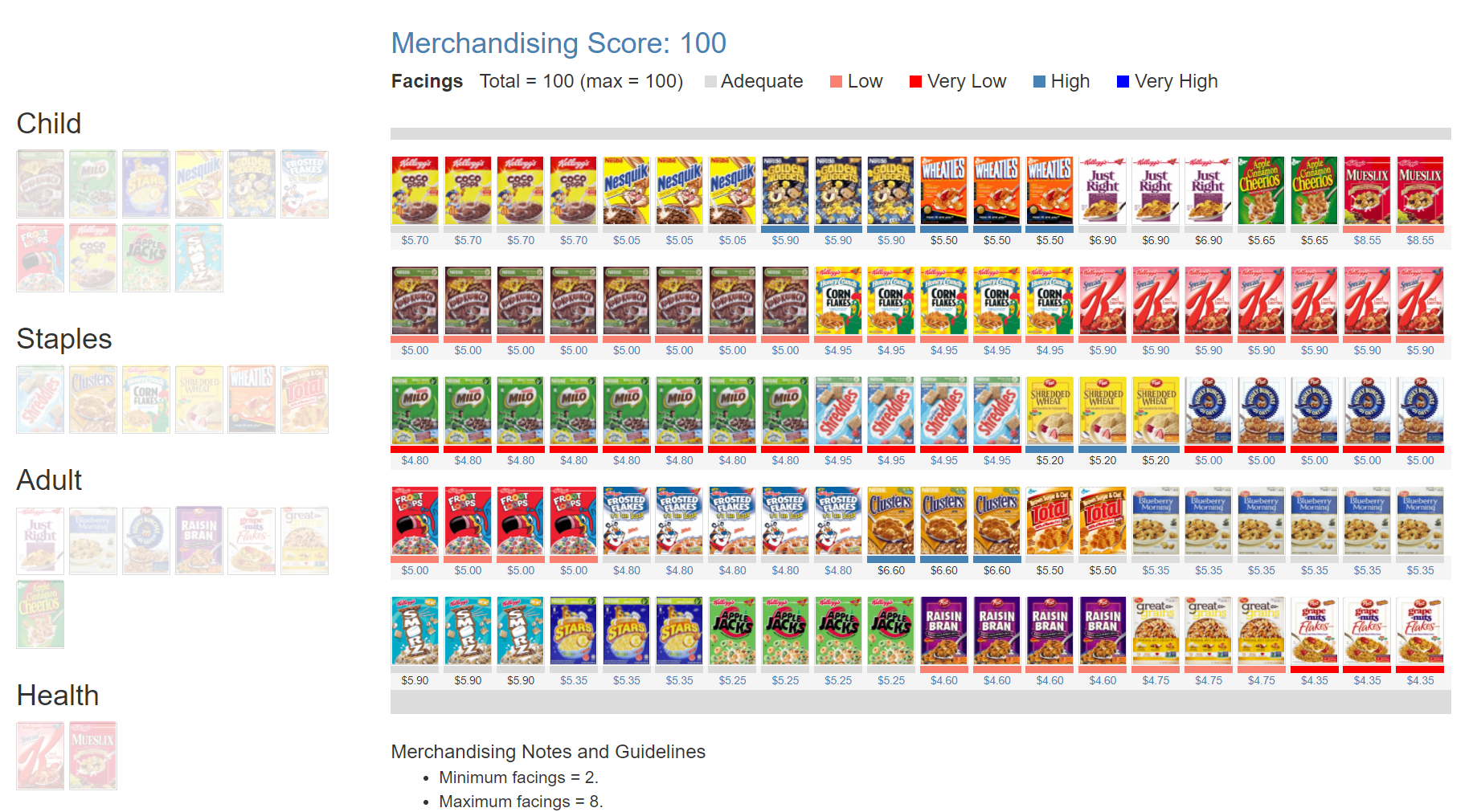-
Category Management
Category Management
Partnership between Retailers and Manufacturers
Category Managers and Trade Marketers
Trade Marketing
Origins of Category Management
Trade Formats
Categories
Category Roles
Category Strategies
Review
Retail Mix
Price
Promotions and In-Store Media
Space Management
Execution
Benefits of Category Management
Developments in Retailing
- Retail Tracking
- Sales and Distribution
- Retail Analytics
- Category Management
- Marketing Education
- Is Marketing Education Fluffy and Weak?
- How to Choose the Right Marketing Simulator
- Self-Learners: Experiential Learning to Adapt to the New Age of Marketing
- Negotiation Skills Training for Retailers, Marketers, Trade Marketers and Category Managers
- Simulators becoming essential Training Platforms
- What they SHOULD TEACH at Business Schools
- Experiential Learning through Marketing Simulators
-
MarketingMind
Category Management
Category Management
Partnership between Retailers and Manufacturers
Category Managers and Trade Marketers
Trade Marketing
Origins of Category Management
Trade Formats
Categories
Category Roles
Category Strategies
Review
Retail Mix
Price
Promotions and In-Store Media
Space Management
Execution
Benefits of Category Management
Developments in Retailing
- Retail Tracking
- Sales and Distribution
- Retail Analytics
- Category Management
- Marketing Education
- Is Marketing Education Fluffy and Weak?
- How to Choose the Right Marketing Simulator
- Self-Learners: Experiential Learning to Adapt to the New Age of Marketing
- Negotiation Skills Training for Retailers, Marketers, Trade Marketers and Category Managers
- Simulators becoming essential Training Platforms
- What they SHOULD TEACH at Business Schools
- Experiential Learning through Marketing Simulators
Category Management — Price
As the variable that generates revenue and profit, price warrants careful consideration.
The adage “rich people love low prices; the poor need them” holds true universally. So, while the product range may vary depending on income levels, it is wrong to assume that well-to-do shoppers in countries with high per capita incomes are not influenced by low prices or attractive promotions.
Considering that the average supermarket lists roughly 20,000 items and that the list keeps changing, there is need for simple, easy-to-adopt approaches such as mark-up pricing. These mark-ups vary based on category dynamics, as well category/brand roles and strategies.
Historically, the two most common approaches that retailers have taken on pricing are high-low promotional price and everyday low price (EDLP). The high-low promotional pricing involves setting regular prices at healthy margins and running frequent promotions to temporarily reduce prices for some products. With EDLP the retailer charges low prices for items all the time, making low but positive margins on them.
Retailers tend to use a hybrid of the two approaches. Stores may have some key products on EDLP, and the rest following high–low promotional approach. Additionally, there are privileges and discounts for loyalty card holders.
Importantly, because it is such an important driver of store choice, the retail price of a product not only influences sales for that product, it also affects the sale of other products in the store. Loss leaders and traffic builders for instance, attract shoppers into stores, and these shoppers buy a host of other products in addition to the ones that attracted them into the store.
Price or price mark-ups should be aligned with category/brand roles and strategies. Destination categories are generally priced to attract shoppers, routine and seasonal categories are priced so that they remain fairly competitive, and convenience categories are priced to afford healthy margins.
In the context of category strategies, traffic builders are priced lower than the competition to gain shoppers, whereas profit generators are priced to generate profits. Excitement and image creating products may be priced to provide healthy profit margins. Transaction builders, on the other hand, should be competitively priced to encourage frequent purchases. Lastly, products falling under turf protection strategies are also priced competitively to ensure the chain’s continued strength and dominance within these categories.
A balanced portfolio is vitally important. Storewide high prices will result in loss of shoppers leading to a downward spiral that would eventually drag down revenue as well as profits. On the other hand, having too many traffic builders will severely impair margins. Striking the right balance is the key to success.
Previous Next
Use the Search Bar to find content on MarketingMind.
Online Apps to train Category Managers

The Plannogrammer is an experiential learning facility for category managers, trade marketers, and retailers in consumer markets. Ideally suited for hybrid learning programmes, Plannogrammer imparts hands-on training in the planning and evaluation of promotions and merchandising.
It supports a collection of simulation and analysis platforms such as Promotions and Space Planner for optimizing space and promotions, Plannogram for populating shelves and merchandising, a Due To Analysis dashboard that decomposes brand sales into the factors driving sales, and a Promotion Evaluator to evaluate the volume, value and profit impact of promotion plans.
Contact | Privacy Statement | Disclaimer: Opinions and views expressed on www.ashokcharan.com are the author’s personal views, and do not represent the official views of the National University of Singapore (NUS) or the NUS Business School | © Copyright 2013-2025 www.ashokcharan.com. All Rights Reserved.





